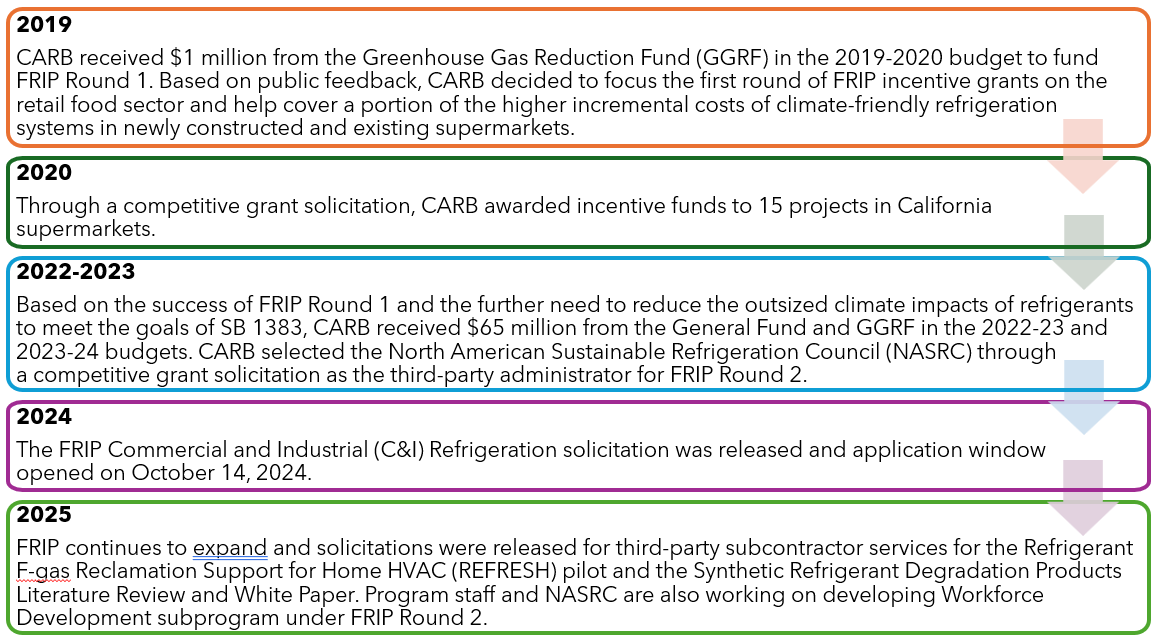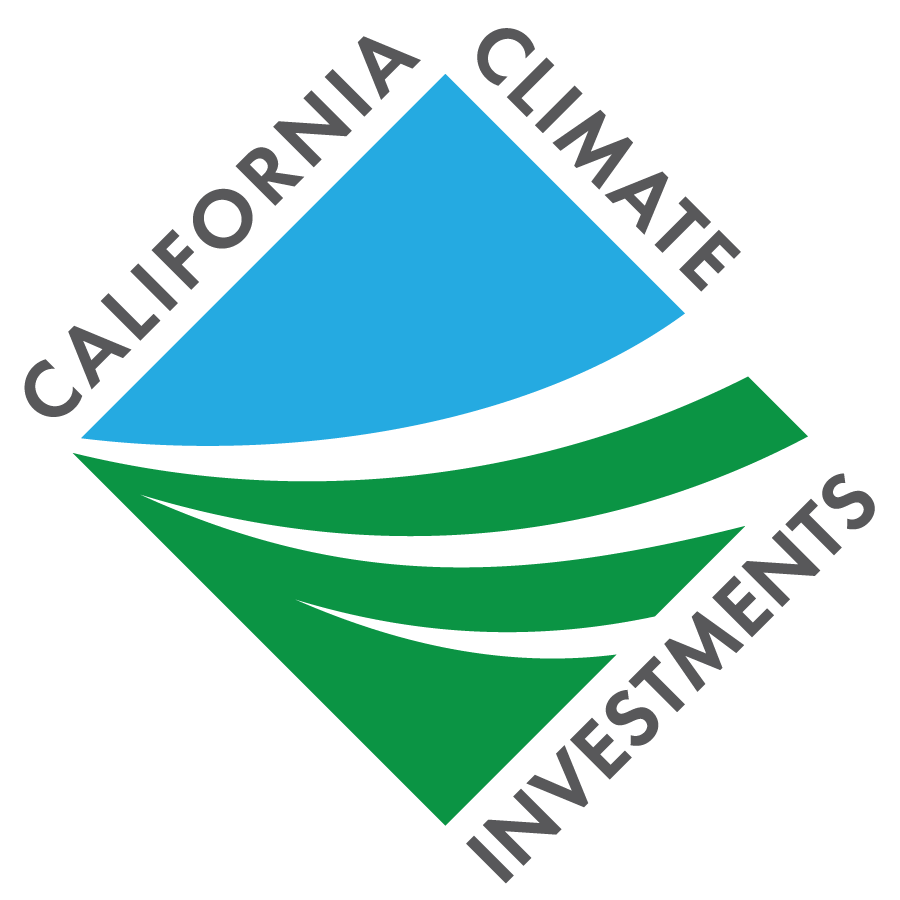
F-gas Reduction Incentive Program
Primary Contact
Categories
About
Senate Bill 1013 established the Fluorinated Gases (F-gas) Emission Reduction Incentive Program, also known as the F-gas Reduction Incentive Program (FRIP), to be administered by CARB, to promote the adoption of new refrigerant technologies to achieve short- and long-term climate benefits, energy efficiency, and other co-benefits, as specified.
Hydrofluorocarbons (HFC), one class of fluorinated gases, are potent climate pollutants. Their climate impact, quantified through global warming potential (GWP), is hundreds to thousands of times higher compared to carbon dioxide, the most common greenhouse gas. HFCs are currently the fastest growing greenhouse gases in California and in the US. Scientists have determined that reducing climate pollutants such as HFCs is among the most effective climate mitigation strategies.1 HFCs are predominantly used as refrigerants in refrigeration equipment, air conditioners and heat pumps.
Due to their potent climate impact, Senate Bill 1383 mandates the reduction of HFCs 40% below 2013 levels by 2030. In 2017, the CARB Board approved the Short-Lived Climate Pollutant (SLCP) strategy developed pursuant to Senate Bill 605. In the strategy, incentives for low-GWP refrigerant technologies were identified as a key strategy in achieving the emission reduction targets set forth by Senate Bill 1383.
Incentives can help overcome the cost premium for and thus increase the adoption of climate-friendly technologies, particularly ultra-low-global warming potential (GWP) technologies (defined as having a GWP <10). Higher adoption will lead to economies of scale, which will lead to wider market adoption, and therefore greater GHG reductions. Senate Bill 1206, passed in 2022, directs CARB to assess how to transition California’s economy to ultra-low-GWP and no-GWP alternatives in all HFC sectors. One of the pathways to do that is through incentives, so FRIP aligns well with California’s long-term climate goals as identified in Senate Bill 1206.
FRIP works in conjunction with CARB's regulations on HFCs in stationary refrigeration, air conditioning, and other end-uses by providing funding to mitigate first costs associated with the transition to lower-GWP technologies, necessary to meet SB 1383 targets.
A number of ultra-low-GWP refrigerant technologies are currently available and in use in the commercial and industrial refrigeration sector. The following resources provide information on the most widely adopted technologies for retail food facilities:
- CO₂ Transcritical Booster Rack Systems Fact Sheet
- Natural Refrigerant Technology Options: Retail Food Fact Sheet
Additionally, the following regulatory fact sheets were created to provide information on compliance with refrigerant regulations:
- HFC Refrigerant Regulations: Retail Food Refrigeration
- HFC Refrigerant Regulations: Industrial Process Refrigeration
- HFC Refrigerant Regulations: Cold Storage and Other Refrigeration
History of FRIP

Background Information
FRIP is part of California Climate Investments, a statewide initiative that puts billions of Cap-and-Invest, formerly known as Cap-and-Trade, dollars to work reducing greenhouse gas emissions, strengthening the economy and improving public health and the environment — particularly in disadvantaged communities. SB 1013 authorized moneys from the GGRF to be allocated for incentives offered as part of FRIP.
- 1Xu, Y., D. Zaelke, G. J. M. Velders, and V. Ramanathan (2013).

